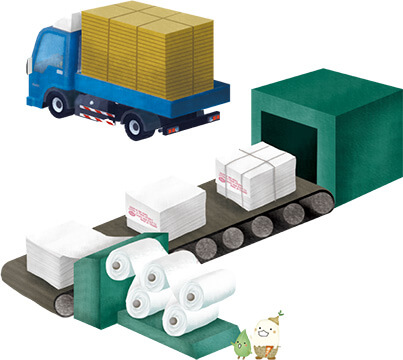

Tree is the main raw material for pulping
The main component of paper pulp is plant cellulose that can be extracted from many plants, such as wood, cotton, hemp, grass and even straw. Due to the abundance of forest resources in the world and the recycling of forest resources, currently wood fiber is the most widely used pulping raw material with the largest output. According to different growing environments, trees can be roughly divided into needle-leaved trees and broad-leaved trees. Needle-leaved trees mainly grow in high-latitude regions and high-altitude mountain regions. The leaves are needle-like, light and soft, with longer fiber that has better strength, providing good paper density. Broad-leaved trees mainly grow intropical and subtropical regions. The leaves are laminated, heavy and hard, with shorter fiber that has less strength, but can ensure evenness of the paper.
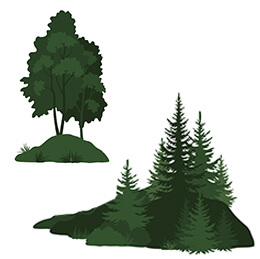
Peeling and slicing of trees
About 50% of the cellulose in trees is the main component of the cell wall, and the other parts are hemicellulose, lignin, resin with small molecular weight and inorganic ash. In order to separate cellulose from other components, the digesting of the chemical agent at high temperature must be conducted. In order to improve production efficiency, the bark with little cellulose must be removed first to avoid the consumption of chemical agent. Next, the wood is cut into small pieces to increase the contact area between the wood and the chemical agent, so that the reaction rate is accelerated.

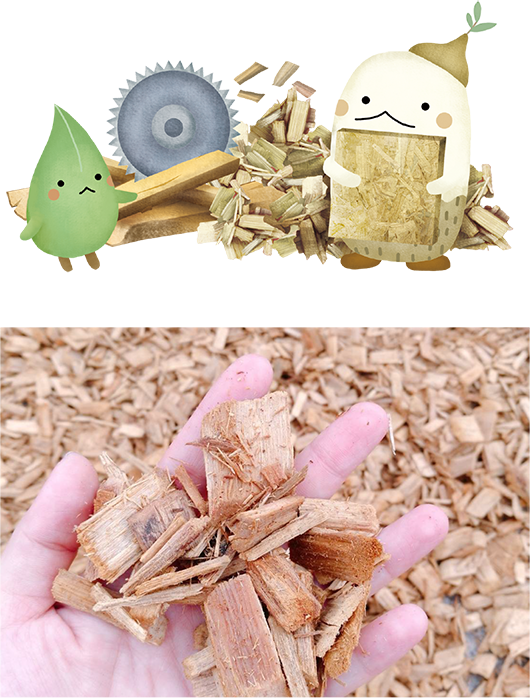
Digesting
Lignin is used to bind the cellulose and hemicellulose in wood. In order to remove the cellulose, lignin must be decomposed by digesting of the chemical agent at high temperature. Kraft Process and Sulfite Process are two common pulp making processes. 80% of global pulp yield is obtained by Kraft Process, which is also adopted by our company. In Kraft Process, the mixed alkaline solution of sodium hydroxide (NaOH) and sodium sulfide (Na2S) is used as digesting liquid. After digesting of the wood chip, the chemical structure of lignin is damaged and dissolved in digesting liquid. Since lignin is dark brown, the waste liquid formed by the digesting liquid is called "black liquor".
Pulp washing
After digesting, although lignin is damaged and dissolved in the black liquor, the fiber and the black liquor are still mixed together, so the purpose of pulp washing is to separate the fiber and the black liquor. The fiber is washed and screened with water, and the slurry is pale yellow.
Screening
The coarse slurry isseparated from impurities or fiber bundles by larger pressure difference through a pulp screen with small holes or slits.
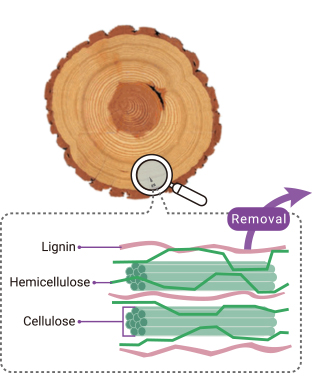
Bleaching
The slurry after digesting and washing is yellowish because some lignin in the fiber is still not dissolved by the digesting liquid, making the slurry still yellowish. In order to improve whiteness, the slurry should be bleached in multiple stages. In each stage, the chemical agent with stronger reaction power should be used to react with lignin remaining in the slurry and gradually remove the remaining lignin.


The dry pulp board is put into the pulp dispersing tank, and the pulp board fiber is dispersed and dissociated by hydraulic action.
The purpose of pulp refining is to improve the properties of the slurry by mechanical means, including physical strength, appearance property, and other properties.
In order to make paper with better characteristics, paper chemicals must be added to achieve the goal. For example, adding a wet strength agent can give paper a certain strength in the wet state.
According to the speed of the paper machine and the paper base weight requirements, continuous and stable dry component of pulp feed is provided. Dilute the pulp to a suitable concentration to form a uniform papersheet during the papermaking process.
The main purpose is to remove impurities in the slurry to avoid paper defects caused by impurity residue.
The overall designof the head box is to make the flow rate equal when the slurry is ejected, which is the most important key for the paper fiber interleaving and packing average distribution.
After the slurry is ejected from the head box, it will fall evenly on the interlaced mesh at the bottom of the box to form a piece of paper. Various dewatering elements are designed below the wet end to take water out of the wet paper piece. The water that ran away from the holes in the mesh is collected and then reused.
The pressing section consists of several pressing rollers and blanket. The wet paper passes between the upper and lower pressing rollers, and the water is squeezed out and absorbed by the blanket. In addition to physical drying, pressing polishes the paper surface and increase the strength of wet paper.
Drying cylinder is a hollow cylinder made of cast iron, mainly composed of dozens of upper and lower permutations and configurations. The inner of the drying cylinder is filled withsaturated water steam, which will give off heat energy when condensing, and heat energy is transferred from cast iron to paper to achieve drying effect.
To improve the smoothness of the paper surface, and have basic water resistance, a layer ofwater-repellent coating is applied on both sides of the paper.
The calender consists of two or more calendering rollers through which the paper is passed to increase its gloss and smoothness with pressure and heat.
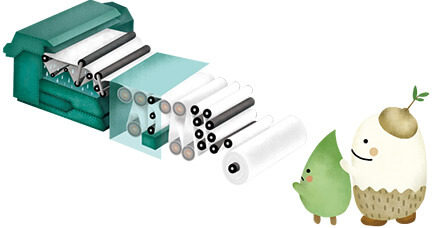
The coater is mainly composed of coating equipment and drying equipment. The purpose of paper coating is to further polish the paper surface. For example, to produce extremely soft and high gloss coated paper, we apply special coatings on the paper surface.
A supercalender consists of 9 to 18 vertically alternating stack of hard polished steel and soft fiber-covered rolls, heated by introducing steam through hollow, giving the paper an extremely smooth and high-gloss finish.
Cutting machine is a device used to cut web paper into sheet paper. There are round knife and long knife on the cutting machine. The round knife is used to cut the width of the paper roll into several pieces, and the long knife is used to cut the paper in the vertical direction.
